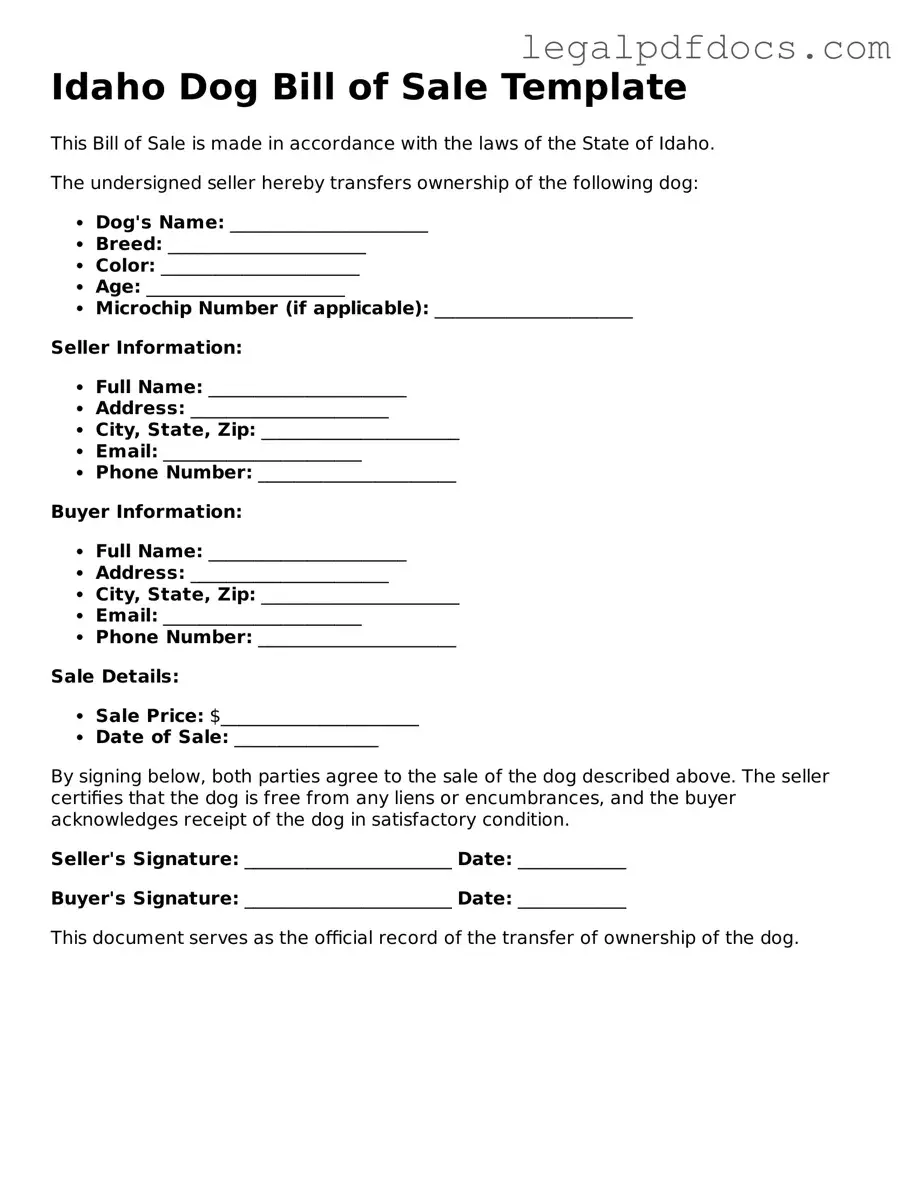Official Dog Bill of Sale Form for Idaho
The Idaho Dog Bill of Sale form serves as a legal document that facilitates the transfer of ownership for a dog from one party to another. This form outlines essential details, including the dog's description, the seller's and buyer's information, and the terms of the sale. Ensuring that this document is properly filled out can protect both the seller and the buyer in the transaction.
To begin the process, please fill out the form by clicking the button below.
Open Dog Bill of Sale Editor Here
